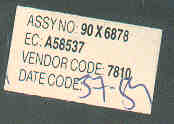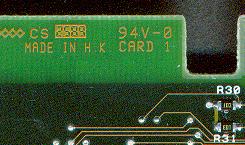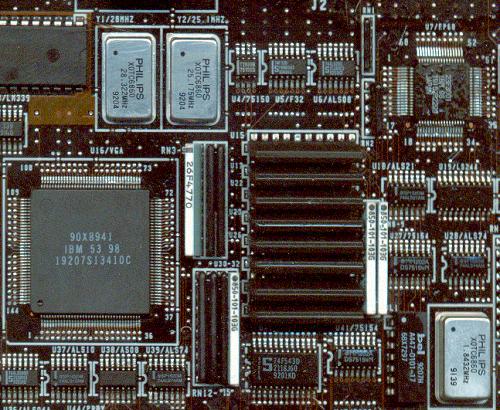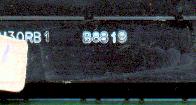 |
Manufacturing date of this Panasonic CR-581B CD-ROM drive is clear enough. |
How Old My Vintage Computer Is, Exactly?
Identifying manufacture date of Your System
A Short Note
It is rather regretful that so many Computer Museums on the Web do not specify date of manufacture of their exhibits. In some cases, chronology and dates are totally ignored. Old computers from different eras are simply lumped together, and no date or no chronological indication is given.
Of course, if we want to look at each machine from the correct histocal perspective we need to know in which chronological context it ha sto be located.
As I know of no other page treating this theme on the www, I decided to write this short survey which may be of help to somebody willing to establish exact date of manufacturing of her/his vintage personal computer. Especially, I hope it will draw some attention to the above mentioned issue, i.e. placing historical electronic appliances in their exact chronological context.
As I am not very experienced in this field, these pages will look incomplete and fragmentary to most of you. I also regret that there are many graphic in this page, but I had to use many photographical examples.
| In some cases it is quite easy to
retrieve your PC's manufacturing date, as it is printed
on a label located on the rear panel or on the bottom of
the main system unit. It may be a little more difficult to establish whether all of its parts (cards, drives) are contemporary (thus, possibly "original") or if they had been added in a later moment. In most cases you will need to partially disassemble your machine. This is done in any case, I believe, every time you take home a "new" machine. You will not able to resist. You will open it. |
 |
Manufacturing date of this Panasonic CR-581B CD-ROM drive is clear enough. |

|
Another example. This Western Digital Caviar 2250 hard disk drive bears two different datings. A "4 NOV 97" dating appears on Western Digital's main label, but if we look at another large label affixed by IBM (this hard disk belongs to a Big Blue's machine) we may find a "9711" indicating year and month of shipment. |
 |
Another example. This label has been affixed to an IBM PS/2 65 SX power supply. Here dating is expressed in week/year, and this is by far the most common system when peripherals and smaller parts are involved. Such labels often give final date of workmanship. |
 |
 |
| This label has been affixed to a PS/2 70 speaker frame (37-89, 37th week of 1989). | Finally, this ESDI controller bears a 2589 dating printed on the circuit board. In this case, actual manufacturing date may be somewhat higher (shipment date was certainly higher). |
 |
| Label is the first thing we would
check, as we saw. But, some parts (cards especially) bear
no label(s) at all. In such cases we would check datings appearing on all parts and components. This PS/2 80 motherboard (or planar, in IBM's language) includes some components (those silver rectangular boxes marked Philips) dated 9204 e 9131. If you look at this image a little carefully, you will also be able to identify some other datecodes printed on some chips (9207, 9201, etc.). Not every electronic component has such datecodes (for instance the large IBM chip on the left apparently bears no datings), but most do. |
 |
Now let's turn to a 2 Mb memory module belonging to a PS/2 80. It bears a 8819 dating on the plastic connector which inserts into the planar. However, if we stop after this we would not have its correct date. Dating printed on such plastic accessories are not reliable as these parts often remained in stock for several months before being actually used. Therefore, let's look a little better at this memory module. |
 |
After we
turn the module, we will be able to find two other
datings, a 4089 printed on the circuit board, and a 41-89
which had been scratched in a later moment. Electronic components which are subjected to a faster depreciation (that is those having a higher technological content, like microchips), obviously were kept in stock for shorter periods and thus often carry the highest datings. |
 |
It should be quite easy to establish the manufacturing date of this Intel 486DX by IBM CPU (9314). However, this is a rather fortunate circumstance, as in most cases it is rather difficult to interpret Intel's datecodes. There are many other manufacturers that use cryptic or date codes. I will try to interpret some of them in the future. |